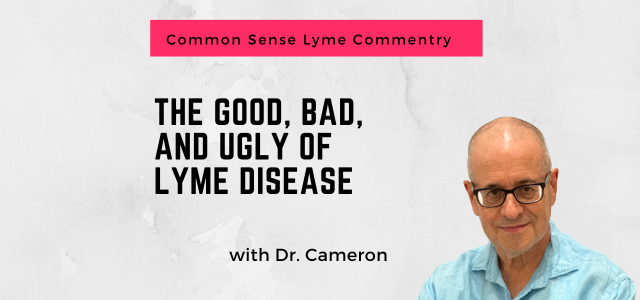Call for your appointment today 914-666-4665 | Mt. Kisco, New York

A Tale of Three Outcomes
“I thought I was better… until I wasn’t.”
That’s what one of my patients told me after completing a standard course of antibiotics for Lyme disease. At first, she felt relief—less pain, more energy. But weeks later, the fatigue crept back in. Then the brain fog. Then the joint pain that kept her up at night. What began as a simple tick bite turned into a complex journey through symptoms, misdiagnoses, and delayed treatment.
When it comes to Lyme disease, patients deserve to know the whole story—not just the optimistic version. As a doctor who has treated Lyme disease for decades, I’ve come to describe it in three stages: the good, the bad, and the ugly.
Understanding these stages can change the course of your care—and your life.
The Good: Early Detection and Recovery
Let’s start with the good news.
If Lyme disease is diagnosed early—usually within days to a few weeks of a tick bite—and treated appropriately with antibiotics, most patients recover fully. Many return to work, school, parenting, and sports without ever looking back. They remember the tick bite, the rash, or flu-like symptoms, but the story ends there. Life goes back to normal.
This is what we hope for every patient.
But unfortunately, not every Lyme disease story ends this way.
The Bad: Lingering Symptoms and Frustration
Now, let’s talk about the bad.
Some patients complete their antibiotics and still feel unwell. They may face months or even years of persistent symptoms:
• Fatigue that makes it hard to get through the day
• Brain fog that affects memory and focus
• Aching joints or nerve pain that comes and goes
This is often labeled Post-Treatment Lyme Disease Syndrome (PTLDS)—a term that can be both validating and limiting. Many patients feel dismissed when told there’s no further treatment option, only time and patience. Yet they’re still sick—and they want answers.
Sometimes, this “bad” outcome is not just the aftermath of Lyme—it’s a sign of a persistent infection, an undiagnosed co-infection like Babesia or Bartonella, or even a misdiagnosis.
The Ugly: Chronic, Misunderstood, and Life-Altering
And then there’s the ugly truth.
For some, Lyme disease doesn’t go away. It becomes chronic—a condition that disrupts every aspect of life. These patients often endure:
• Severe, unrelenting fatigue
• Chronic pain or neurological symptoms
• Anxiety, depression, and even cognitive decline
• Loss of income, relationships, and identity
They see specialist after specialist, undergo test after test, and are often told, “There’s nothing more we can do.” Some are misdiagnosed with fibromyalgia, chronic fatigue syndrome, or even psychological conditions.
This stage is often preventable, especially if we don’t delay treatment or dismiss symptoms when they don’t follow the textbook path.
Why Knowing the Full Story Matters
Whether your Lyme disease experience falls into the good, the bad, or the ugly category, knowing the potential outcomes helps you make informed decisions.
Patients who understand:
• That Lyme disease can persist
• That co-infections exist
• That early treatment matters
• That healing may require time and patience
… are more likely to seek the right care, ask the right questions, and avoid falling through the cracks of the medical system.
Final Thoughts from a Lyme Disease Expert
If you’ve been diagnosed with Lyme disease—or suspect you have it—don’t settle for a one-size-fits-all answer. Listen to your body. Trust your instincts. And don’t be afraid to advocate for care that goes beyond the standard playbook.
Because Lyme disease isn’t just a rash and a few weeks of antibiotics. Sometimes, it’s a long road—and patients deserve guidance every step of the way.




This is me! Almost ! I’ve met all the criteria, I’ve been to all the doctors and because I live in NC, I’m not supposed to have LD! I went over 5 months without a treatment because they didn’t test me for LD (I never saw the first tick on me) until we asked them to test! Once I started the antibiotic I got better quickly. But that’s as far as it goes! It’s like I have an alien living in me! I have a very good PCP who finally doesn’t think I am a crazy person and seems to want to help. I also have a wonderful Neurologist(who has been treating me for Parkinson’s disease since 2012)
Who has helped so much and is still helping me! Doxycycline is the only antibiotic that has been offered for treatment. Is there something out there that will help me? I need some help, or I will be an invalid before my time!
I am happy that you have supportive physicians. I hope you find sometime familiar with chronic manifestations of Lyme disease for an assessment.
Can you recommmend someone I could go see for help? Do you see patients or not?
I advise my patients to begin with Lymedisease.org, globallymealliance or ILADS if you primary cannot find a name. I see patients.